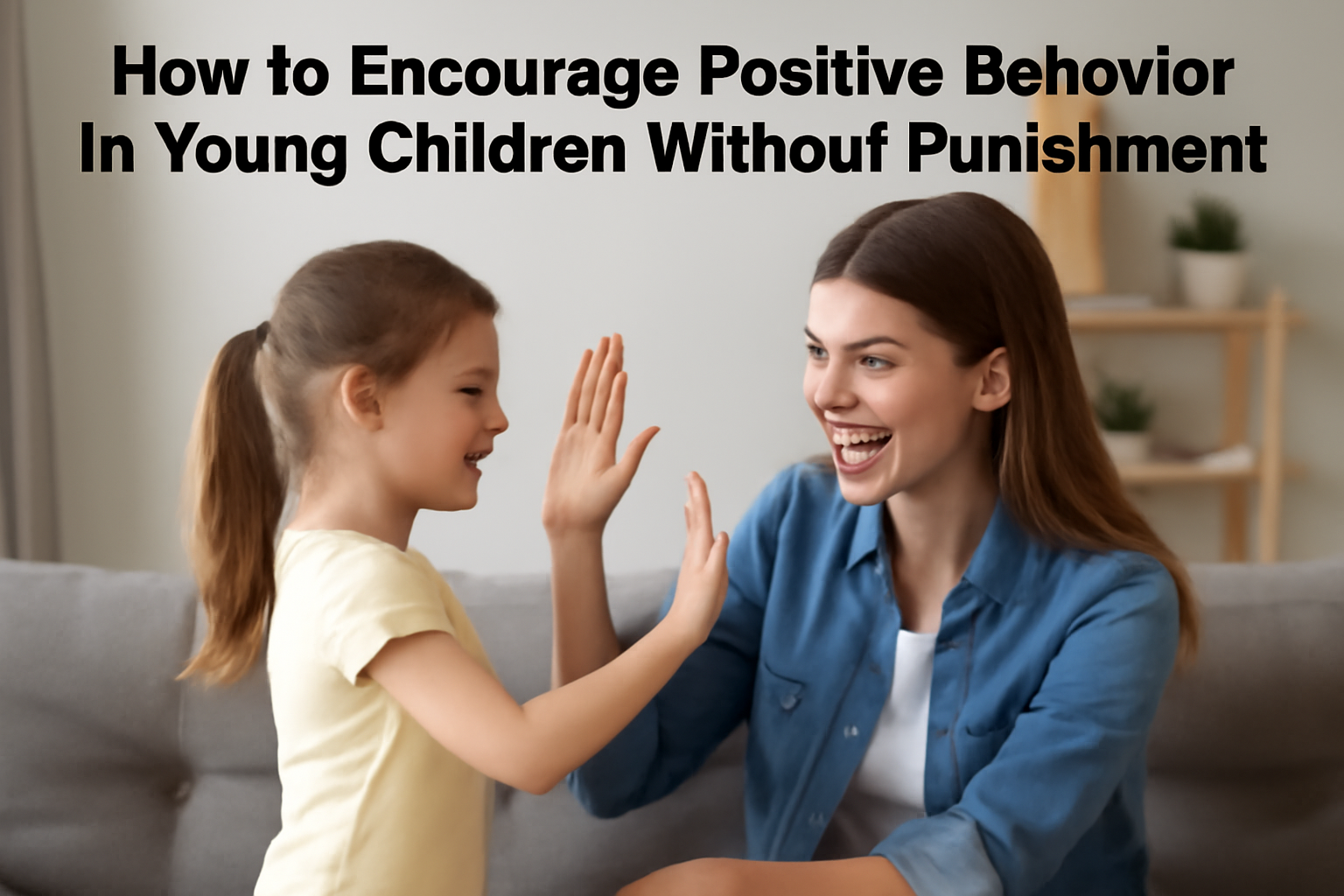Raising a child who is kind, respectful, and cooperative is a goal shared by nearly all parents. But how do you get there—especially during the tough moments—without relying on punishment?
The key is to shift the focus from control to connection and guidance. Encouraging positive behavior starts with understanding your child’s development, setting clear expectations, and using discipline as a tool for teaching, not punishing.
Here’s how to guide your child toward good behavior in a loving and effective way.
What Is Positive Discipline?
Positive discipline is an approach that focuses on teaching, empathy, and mutual respect. It encourages children to make good choices—not out of fear, but because they understand what’s expected and feel supported in doing so.
Unlike punishment, which focuses on what a child did wrong, positive discipline focuses on what the child can do better next time.
Understand Why Kids Misbehave
Children misbehave for many reasons:
- They are tired, hungry, or overstimulated
- They lack the skills to express emotions appropriately
- They want attention or connection
- They are testing boundaries (which is normal and healthy!)
- They are struggling with a big feeling and don’t know how to manage it
Understanding the “why” behind the behavior helps you respond with empathy instead of anger.
Stay Calm and Present
When your child acts out, your response matters more than the behavior itself. Yelling or punishing harshly might stop the behavior short-term—but it often creates fear or resentment.
Instead, practice self-regulation:
- Take a breath before responding
- Lower your voice instead of raising it
- Stay physically close and calm
- Model the behavior you want to see
Your calm energy helps your child feel safe, even in difficult moments.
Set Clear Expectations Ahead of Time
Prevent many behavior problems by being proactive:
- Set simple, clear rules that your child can understand
- Be consistent about what is and isn’t allowed
- Use visual cues or pictures for young children
Example:
- Instead of saying “Be good at the store,” say, “We walk next to the cart, use indoor voices, and keep our hands to ourselves.”
Clarity reduces confusion—and makes cooperation more likely.
Catch Good Behavior and Praise It
Positive reinforcement is powerful. Children are more likely to repeat behaviors that earn attention—so give plenty of attention to the behaviors you want to see.
Use specific praise:
- “I noticed you shared your toy. That was kind.”
- “Thank you for using your words instead of yelling.”
- “You helped clean up without being asked. Great job!”
This builds confidence, reinforces values, and strengthens your connection.
Offer Choices and Autonomy
Children have a deep need for control over their environment. You can honor that need while still guiding behavior by offering limited choices:
- “Would you like the red cup or the blue one?”
- “Do you want to brush teeth before or after putting on pajamas?”
- “You can read two books—this one or that one.”
Offering choices helps your child feel respected and reduces power struggles.
Use Natural and Logical Consequences
Consequences can be effective when they are related, respectful, and reasonable.
- If your child throws a toy, the toy is put away for a while
- If they refuse to put on a jacket, they may feel cold outside
- If they spill something, they help clean it up
Avoid unrelated punishments like timeouts or threats, which may lead to shame rather than learning.
Teach Problem-Solving Skills
When conflict arises (between siblings, friends, or even with you), guide your child through the process of solving the problem:
- Identify the problem
- Talk about feelings
- Brainstorm solutions together
- Choose one and try it
- Reflect on what worked or didn’t
These conversations might take time—but they teach life skills your child will carry forever.
Create a Positive Environment
Your child’s behavior is shaped by their surroundings. Set up an environment that encourages success:
- Keep toys and materials organized and accessible
- Have consistent routines and predictable schedules
- Minimize overstimulation with quiet time and breaks
- Avoid long periods of screen time, which can lead to agitation
A calm, structured environment supports calm, cooperative behavior.
Model the Behavior You Want to See
Your child watches everything you do. If you speak kindly, treat others with respect, and handle frustration with calm, they’ll learn to do the same.
When you make a mistake, apologize:
- “I yelled earlier, and I’m sorry. I was frustrated, but I want to do better next time.”
This teaches accountability and humility—two qualities every child needs.
Be Consistent—but Flexible
Consistency builds trust. Your child learns what to expect and what’s expected of them.
But flexibility is also important. Some days, your child may be overtired, sick, or overwhelmed. Adjust your expectations when needed—and offer extra patience during tough seasons.
When You Need to Say No—Do It with Empathy
Sometimes your child simply can’t do what they want to do—and that’s okay. Saying no with kindness helps your child accept limits without feeling rejected.
- “I know you want candy. It’s not snack time, but we can have fruit.”
- “It’s hard to stop playing, isn’t it? Let’s take three deep breaths, then clean up together.”
This keeps the boundary, while honoring their emotions.
Final Thought: Discipline Is About Teaching, Not Controlling
Positive discipline doesn’t mean letting your child do whatever they want. It means guiding them with love, patience, and respect so they grow into capable, kind, and confident people.
Your goal isn’t to control your child—it’s to teach them how to control themselves. And that begins with how you show up in the hard moments.
Every tantrum, every challenge, every test of limits is an opportunity to connect, teach, and grow—together.
